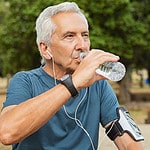Introduction
Knee pain is a universal issue. It is caused by injury, overuse, aging and arthritis. Whether you are an athlete or someone with a sedentary lifestyle, rest and recovery strategies are key for relieving pain.
Resting enables healing following injury or illness, and can stop overuse-related discomfort. Recovery consists of activities such as stretching, to improve flexibility and strength around the knee joint. Depending on your situation, rest and recovery may include:
- Heat or cold therapy to reduce inflammation.
- Physical rehab exercises for muscular strength and endurance.
- Stretching for joint range of motion.
- Massage therapy to increase circulation.
By seeking professional advice, taking natural measures such as rest or light exercise, using good posture when moving, and using braces where applicable, you will be aiding successful knee pain relief.
Understanding Knee Pain
Knee pain is common with active people. To get better, it’s key to know what causes it and the best treatments. Rest and recovery are vital for relief.
Let’s explore knee anatomy and why rest and recovery are essential for managing knee pain.
Causes of knee pain
Knee pain may be caused by several factors, including illness, injury, or age. Usually, these causes can be divided into two categories: acute (sudden) injuries and chronic (long-term) issues.
Acute knee injuries typically come from a single trauma, such as a fracture or dislocation due to a fall or contact sport. Medical attention may be needed, possibly with surgery. Chronic issues develop from age-related wear and tear or activities with repeated motions or much strain on the knees. Common chronic causes of knee pain include:
- Arthritis: Osteoarthritis is a common form of arthritis that hurts the knee joint by breaking down cartilage tissue in the joint. It usually affects older adults, but younger people may also have it if they have underlying conditions such as obesity or a previous injury.
- Bursitis: This painful condition happens when a small fluid-filled sac (called a bursa) between bones and soft tissue becomes inflamed. It is usually in the knee, but can also be in the shoulder, hip, or elbow.
- Tendonitis: This painful issue is caused by inflamed tendons around the knee joint, due to overstretching during activities such as running or climbing stairs. If left untreated, it can cause permanent damage to muscles, joints, and ligaments near the pain.
Symptoms of knee pain
Knee pain can be anything from minor to extreme agony. Signs of the condition can include a dull ache, sharp pain, stiffness, and swelling. Some people experience a locking sensation in the knee joint that gets worse with movement. There might also be swelling, bruising, or redness in the area.
Tendinitis or arthritis can cause a tender point – a spot that is painful when pressed or moved. Symptoms can appear gradually or all of a sudden. It’s important to inform your doctor about any unusual feelings you have. This way, they can diagnose and treat you correctly.
Rest and Recovery
Rest is not just a passive activity! It is a powerful tool for knee pain relief and injury prevention. Understanding its importance for knee pain relief is key. This article explains why rest and recovery are so vital. They are often overlooked by athletes and physical therapy patients. But, if used correctly, they can reduce knee pain and enhance active performance.
Benefits of rest and recovery
Inactivity worsens knee pain. Rest and recovery help reduce it and restore healthy joint function. Benefits include:
- better strength and flexibility;
- less swelling, muscle soreness, and pain;
- improved energy and sleep;
- better coordination and range of motion;
- increased circulation; and
- better overall wellbeing.
Too much rest can cause decreased mobility, so moderate activity is better. Low intensity exercises like stretching and swimming provide range of motion without straining the joint. Other beneficial activities include:
- elevation;
- compression;
- heat/ice therapy;
- massage therapy; and
- exercise (only with professional guidance).
Doing too much too soon can cause more damage than healing.
Types of rest and recovery
Rest & recovery are key for successful knee pain management. Rest helps heal injuries, while active recovery uses exercises to speed up healing & reduce pain. Resting means limiting activities putting weight on the affected area. A doctor can advise what activities can be done.
Active recovery includes stretching, low-impact cardio & strengthening exercises. These activities keep muscles healthy & reduce pain due to immobility. Consult a physician before starting any active recovery program, as certain activities may worsen existing injuries.
Exercise and Physical Therapy
Exercise and physical therapy are essential for treating knee pain. Exercise strengthens and increases flexibility around the knee joint. Physical therapy helps to reduce inflammation and improve joint range of motion. Therefore, exercise and physical therapy are vital parts of a knee pain relief program.
However, rest and recovery are just as important. This is what we’ll be discussing in this article.
Benefits of exercise and physical therapy
Exercise and physical therapy are two go-to solutions for knee pain. They offer both short-term and long-term benefits. Depending on the cause, they may reduce pain, improve strength, flexibility, and range of motion. Also, help with walking and running.
Physical therapy is often used with rest to relieve acute knee pain from overuse. Start slowly and build up on an exercise program for the condition. This will get optimal results and minimize chances of further damage.
Different types of exercise are beneficial for knee pain. These include stretching, strengthening, and balance training. People have different combinations of fitness goals to achieve with their physical therapy sessions. The doctor determines the best exercise depending on the condition.
Physical therapy can help with short-term knee pain from overuse or poor technique. Also, it helps with rehabilitation after a serious injury like a fracture or meniscus tear. Start slowly and progress at your own pace. Also, work with a knowledgeable physical therapist to get back in shape quickly and safely.
Types of exercise and physical therapy
Exercise and physical therapy are key for treating knee pain. The type of rehab exercises you need depend on the severity of your injury. Usually, a plan includes rest periods and targeted exercises to make the structures around the joint stronger.
Your physio or physical therapist will give you exercises that are good for your injury. These could include:
- Weightbearing/resistance exercises such as walking, biking or seated leg exercises.
- Stretching and flexibility exercises to stretch the muscles around the knee.
- Balance exercises like standing on one foot with eyes open and closed.
- Cardiovascular/endurance exercises like using aerobic machines and swimming.
Increasing intensity gradually is important for recovery.
Diet and Nutrition
Eating healthy is important for knee pain relief. Include a balanced diet of whole foods for joint and muscle health. Get more amino acids, omega-3 fatty acids, and anti-inflammatory foods to reduce inflammation and pain. Drinking enough water and resting are essential for good knee joint health.
Benefits of diet and nutrition
Nutrition impacts knee pain management. Eating whole, nutritious food can provide vital vitamins and minerals that may reduce inflammation and help healing. Plus, it can help with weight management and give energy for everyday activities.
Some dietary factors that may benefit knee pain are:
- Protein: Needed to make hormones, enzymes, and body tissues like muscles and bones. Found in animal products, nuts, and beans.
- Omega-3 fatty acids: Anti-inflammatory EFAs, found in fish, flaxseed oil and walnuts.
- Fruits and vegetables: Dark green leaves, like spinach and kale; and citrus fruits, like lemons and oranges, provide natural antioxidants that reduce inflammation.
- Carbohydrate rich food: Low glycemic index carbs, like oats and barley, give slow release energy, cutting down on cravings for sugary snacks.
- Vitamins & minerals: Vitamins A, C and D and minerals, like zinc oxide, regulate metabolism within cells and help overall health, including knee joint health. Instead of supplements, get vitamins and minerals from veggies and fruits.
Types of diet and nutrition
Maintaining a healthy lifestyle requires knowledge of different diets and nutrition. Eating balanced meals with the right amount of calories, proteins, fats, carbohydrates, vitamins, and minerals can help reduce knee pain caused by inflammation and benefit overall health.
Foods with anti-inflammatory properties are beneficial for natural pain relief. Examples include:
- Omega-3 fatty acids from fish like salmon, mackerel, and sardines;
- Fruits like cherries and cranberries;
- Dark leafy greens like spinach and kale;
- Nuts like almonds and walnuts;
- Turmeric, garlic, ginger, and green tea.
Reducing or eliminating fried foods, red meat, and processed snacks helps reduce inflammation.
For chronic knee pain, nutrition counseling may be valuable. Speak to your doctor if you think this can help you. A dietitian or nutritionist can recommend healthy eating habits to target knee pain relief.
Finally, rest is important to manage knee joint pain. Resting at night restores energy and lets muscles repair themselves. Scheduling regular recovery days gives your body time off from exercise, while still allowing muscle strength conditioning, which supports joint health, including the knees.
Conclusion
Remember: rest and recovery are key parts of a knee pain management program, for both chronic and acute pain. Rest can reduce inflammation and help healing, while active exercises can increase strength and flexibility. A physical therapist or healthcare pro is useful for helping you do safe exercises and build strength.
Lifestyle changes, like losing weight, avoiding high-impact activities, having proper footwear, and doing yoga, can also help treat knee pain. Taking regular breaks during the day can give your knees a chance to rest and recover from daily life. Taking these steps can help manage knee pain, prevent flare-ups, and improve life quality.
Frequently Asked Questions
Q: What is the importance of rest and recovery for knee pain relief?
A: Rest and recovery are important for knee pain relief because they allow your body to heal itself. Resting and recovering helps to reduce inflammation, improve range of motion, strengthen the muscles surrounding the knee, and promote healing of the affected area.
Q: What is the best way to rest and recover from knee pain?
A: The best way to rest and recover from knee pain is to limit the activities that cause pain and avoid activities that will put too much stress on the knee. It is also important to use cold and heat therapy, stretching, and massage to help reduce inflammation and improve range of motion.
Q: How long should I rest and recover from knee pain?
A: The amount of time needed for rest and recovery from knee pain varies from person to person and depends on the severity of the injury. Generally, rest and recovery should last for at least a few days to a week. After that, you can gradually begin to reintroduce activities that do not cause pain.





